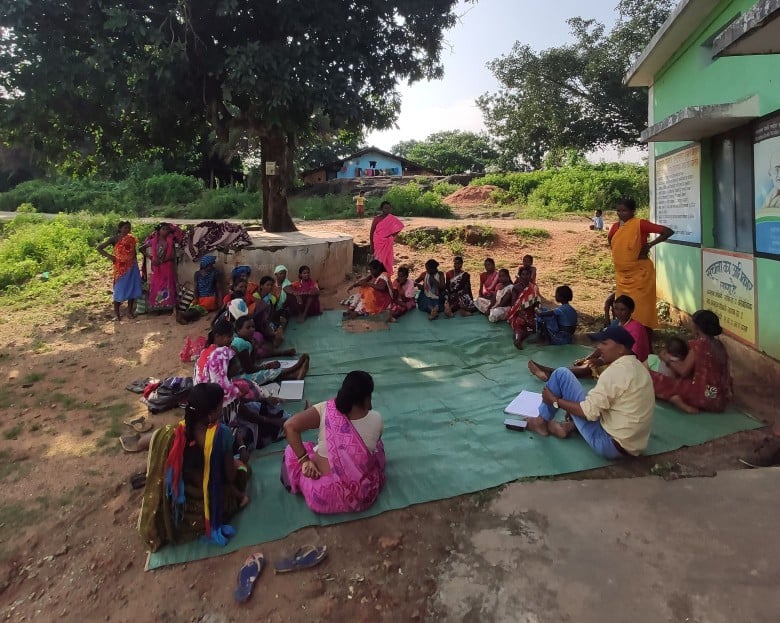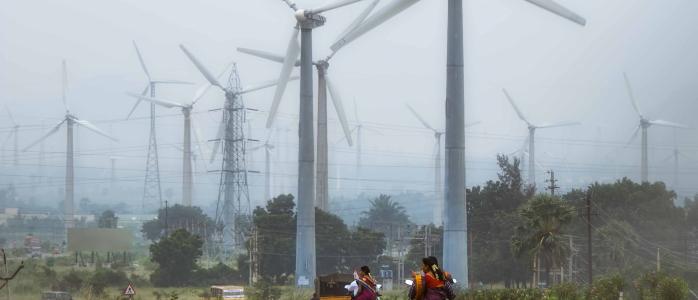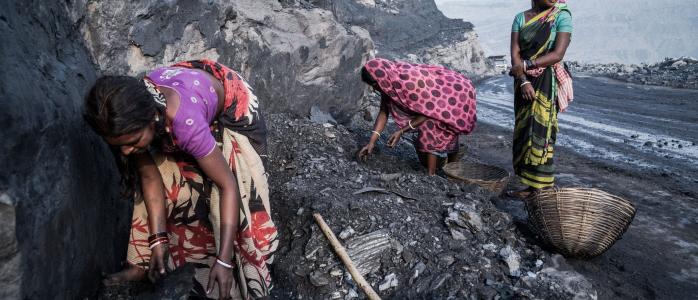



Community-owned solar pumps offer a promising model for affordable irrigation in India. When multiple farmers share a pump, they save on capital costs and the government spends less on subsidies. We recently studied a community ownership project implemented by a rural development NGO, Professional Assistance for Development Action (PRADAN), in Chhattisgarh's Bastar district to help tribal women’s self-help groups (SHGs) grow vegetables outside the wet season. Here are five takeaways from our research that highlight the model’s advantages and key challenges.
The model’s economics are well established
The Chhattisgarh government provides farmers buying solar pumps with subsidies amounting to approximately 90 per cent of the cost of purchase. Yet farmers still need to dish out around INR 20,000 from their own pockets. However, in PRADAN’s community ownership project, each SHG member paid an upfront contribution of just around INR 1,500 and a monthly charge of around INR 50. In fact, approximately 70 per cent of the SHG members we surveyed joined the project due to its affordability for low-income farmers. The model is easily scalable, especially for marginalised communities and farmers who do not have access to any irrigation options.
Start small and build up slowly
PRADAN did a pilot with a single SHG in 2019 and roped in 27 more in the following year. Almost all the SHGs that took part in the project said the first group’s success motivated them to join. Further, while PRADAN’s current focus is on promoting vegetable cultivation in homestead lands, many groups are now looking forward to slowly expanding their activity. The strategy of starting small and building slowly allows projects to progress organically, help manage community expectations, and makes it easier for participants to get support from other household members. This last advantage is particularly significant for women’s SHGs, as our study found that male household members have considerable influence over group decisions.
Groups based on existing social structures manage challenges better
Our study examined the behaviour of two kinds of pump-sharing groups: those whose members came from a single SHG, and mixed groups with members from multiple SHGs. The single-SHG groups benefited from a pre-existing social structure based on years of shared community-building experience. They worked well together, solved problems through discussions, and helped each other out with financing. By contrast, the mixed groups had dissatisfied members and many drop-outs. These findings indicate that community projects that do not enjoy the benefits of pre-existing social structures require considerably more capacity building than those that do. But they also underscore the fact that India’s massive network of 63 lakh SHGs, many of which are well-established, offer a promising avenue for promoting the community-based solar pump model.
Focus on rule-building for present challenges, group-building for future challenges
Scheme implementation is often complicated by uncertainties. For instance, one participant in PRADAN's project took back her upfront contribution after her group's pump was installed, but she continued to use it anyway. Another example is how villagers who initially allowed pipelines to traverse their fields later threatened to disrupt projects unless they were given water free of cost. Rule-building is key to overcoming such challenges in the short term. Supporting agencies like PRADAN have an important role to play in handholding groups during the rule-making process and ensuring strict adherence.
In the long term, the focus should be on enabling groups to make decisions independently. For example, PRADAN let each group draw up a water-sharing schedule and limited its own involvement in the process. Given the diurnally fluctuating output of solar pumps and the possibility of increased future water demand, the groups will have to keep tweaking and updating their water-sharing rules in the future.
Complementary support systems can vastly improve outcomes
Access to irrigation is only one of the many barriers to agricultural development in India. For PRADAN, community-owned solar pumps were part of a broader suite of strategies for livelihood promotion, which included vegetable cultivation and community-based marketing. Thanks to these interventions, more than 90 per cent of participants started farming in the summer right after solar pump deployment, despite having no prior experience. Further, complementary group-based activities—such as training sessions on good agricultural practices—can strengthen social bonds and help enhance outcomes.

Image: CEEW
The way forward
Rethinking the complex issue of irrigation access in India needs not just technological innovations, but also ingenuity in service delivery. The community-ownership model for solar pumps achieves multiple sustainability objectives at once. It promotes affordable irrigation to those who need it most in a fiscally prudent manner. It also advances crop diversity and makes rational use of groundwater. While it may be a time-consuming and effort-intensive model, its outcomes could be transformative. Further, effective coordination and convergence between solar pump schemes, State Rural Livelihood Mission (SRLM) initiatives and agriculture/horticulture departments can help scale it up. The opportunity is too good to ignore.
Anas Rahman is a Programme Associate and Abhishek Jain a Fellow and Director - Powering Livelihoods at the Council on Energy, Environment and Water, an independent, not-for-profit policy research institution; Send your comments to [email protected]






Add new comment